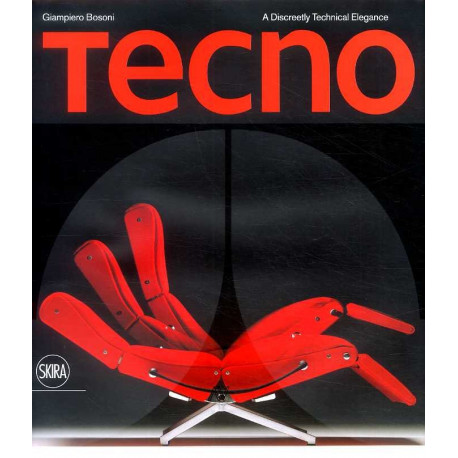No products
XXème siècle
- Paintings
- Photography
- Sculpture
- Contemporary Art
- Furniture
- Architecture and Design
- Ceramic
- Glass
- Jewelry / Goldsmiths / Silverware
- Horology
- Fashion and textiles
- Patrimony / Civilisations
- Collections
- Techniques
- Catalogues raisonnés
- Exhibition Catalogues
- Assay / correspondence / manifest
- Religious Art

Frais de port
à 0,01 €
pour la France
à partir de 50€ d’achats
Tecno /anglais
9788857209845
Temporary unavailable
Temporary unavailable
Further Informations
| Format | 25x29 |
| Photos | 572 |
| Color photos | 532 |
| Binding | relié sous jaquette |
| Language | Anglais |
| ISBN | 978-88-572-0984-5 |
More info
Fondée en 1953 par les frères Borsani, Tecno est bien connu des amateurs de design pour sa chaise longue P40 et son canapé D70 au mécanisme astucieux. Ce livre retrace l?histoire de l?entreprise italienne d?édition de mobilier jusqu?à ces récentes contributions avec entre autres Jean-Michel Wilmotte pour le Louvre et les gares SNCF, Norman Foster pour le Carré d?Art de Nîmes et Jean- François Bodin pour la BPI du Centre Georges Pompidou.
The design, production and cultural path of Tecno has been one of the pillars of the Italian design culture for almost sixty years. Since the company was founded in 1953 by the Borsani twins (Osvaldo, architect, and Fulgenzio, economist), Tecno's production has always been admired with particular interest due to their choice to base their work on a clearly described industrialised organisation, which had evolved from a pre-existing and very productive artisanal activity, the famous ?Atelier Varedo? founded in the early 1920s by their father, Gaetano Borsani.
Osvaldo Borsani, designer and deus ex machina of the company?s creative department, chose to focus on the subtle appeal of technical expertise, which intertwined partially with the ?can-do spirit? learned during his long apprenticeship in his father?s shop. It was also inseparably linked to his collaboration and friendship with artists like Lucio Fontana and Arnaldo Pomodoro.
During the first heroic phase, from the 1950s through the early 1970s, other important professionals occasionally aligned with the precise and prolific line of action laid out by Osvaldo Borsani?s projects, including architect-designers such as Carlo De Carli, Vico Magistretti, Roberto Mango, Robin Day, Gio Ponti, Mario Bellini, Edoardo Vittoria, Albert Leclerc and Eugenio Gerli. This first glorious generation was followed by others who watched prestigious architects like Norman Foster enter the Tecno collection with the famous Nomos system. Others included Ricardo Bofill, Jean-Michel Wilmotte, Emilio Ambasz, Gae Aulenti, and designers such as Giorgetto Giugiaro, Justus Kolberg, Piero Lissoni and Giancarlo Piretti.





